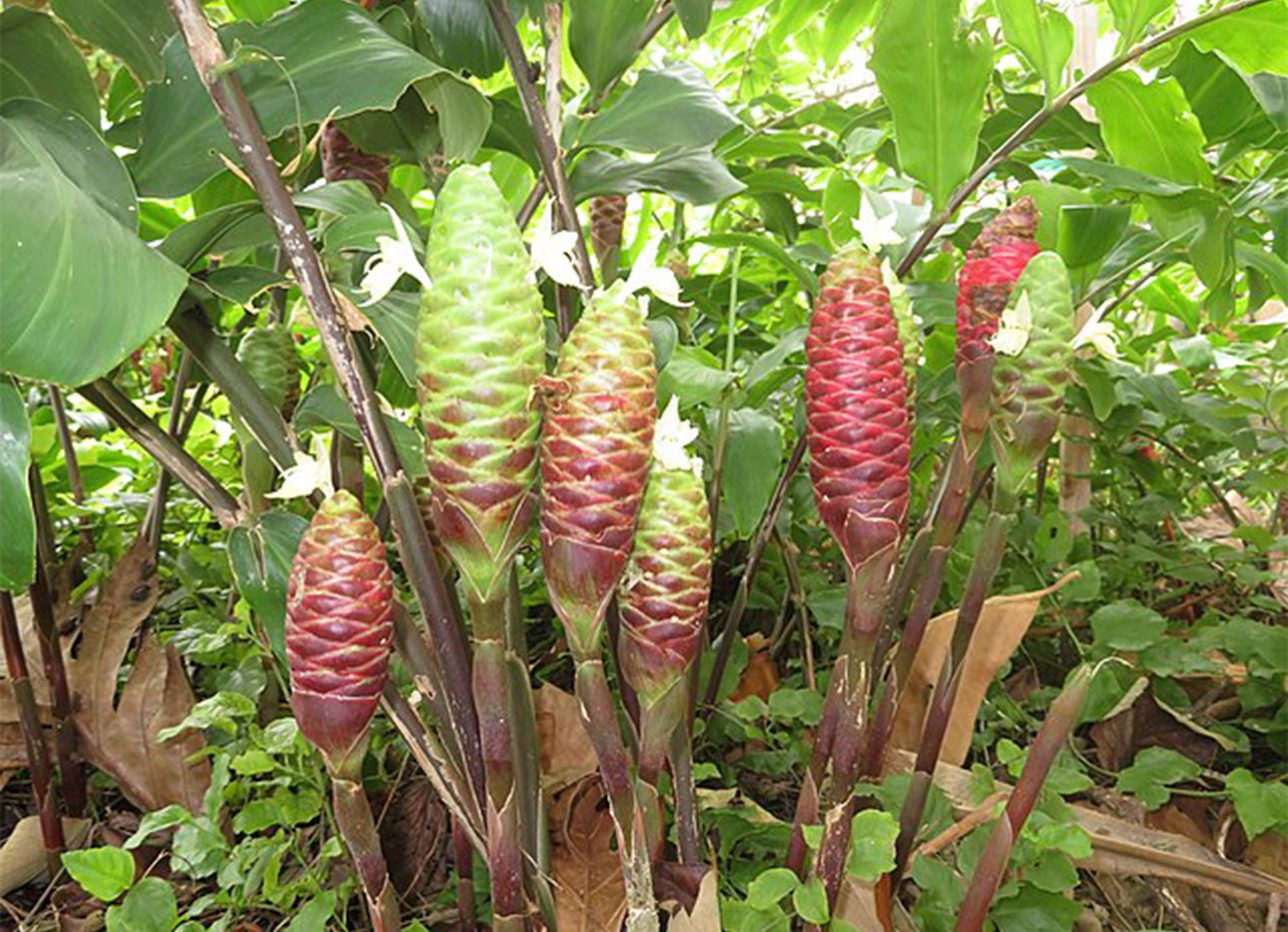
Awapuhi, a Cousin of the Ginger Plant, Is Nature’s Shampoo
Ginger is beloved by many for its peppery scent, clean taste, and wide-ranging health benefits. Lesser known is its cousin awapuhi (zingiber zerumbet), a tropical plant with reddish, pine cone–like forms that contain a fragrant gel that’s more likely to show up in a shower routine than a stir-fry recipe.
The organic goo has been used as a cleanser for centuries. Awapuhi, which originated in India, was one of the plants that Polynesians brought with them when they began colonizing the Hawaiian Islands some 1,600 years ago. Native Hawaiians soon discovered what is perhaps awapuhi’s most distinctive quality: its abundant production of a special kind of mucilage—a thick, gelatinous substance found within most plants—that can be used as shampoo, body wash, and even conditioner.
A firm squeeze of the plant’s cone yields a handful of the translucent gel, which, when massaged into the scalp, helps to balance moisture and produces shiny, healthy-looking hair. It gives off a pleasingly sharp, rejuvenating aroma, much like that of its cousin’s. The mucilage also contains anti-inflammatory and antioxidant properties, which can soothe scalp conditions such as seborrheic dermatitis and dandruff.
The plant’s virtues don’t stop at cleansing. Its gel can remedy afflictions including headaches, stomachaches, bruises, and sprains, and zerumbone, an organic compound found in awapuhi, is currently being studied as a possible treatment for cancer. Understanding all the plant’s botanical and medicinal qualities isn’t a prerequisite for using it, though. To add it to your bathing regimen, the instructions are pretty straightforward once you’ve got the gel in hand: Simply lather, rinse, and repeat.